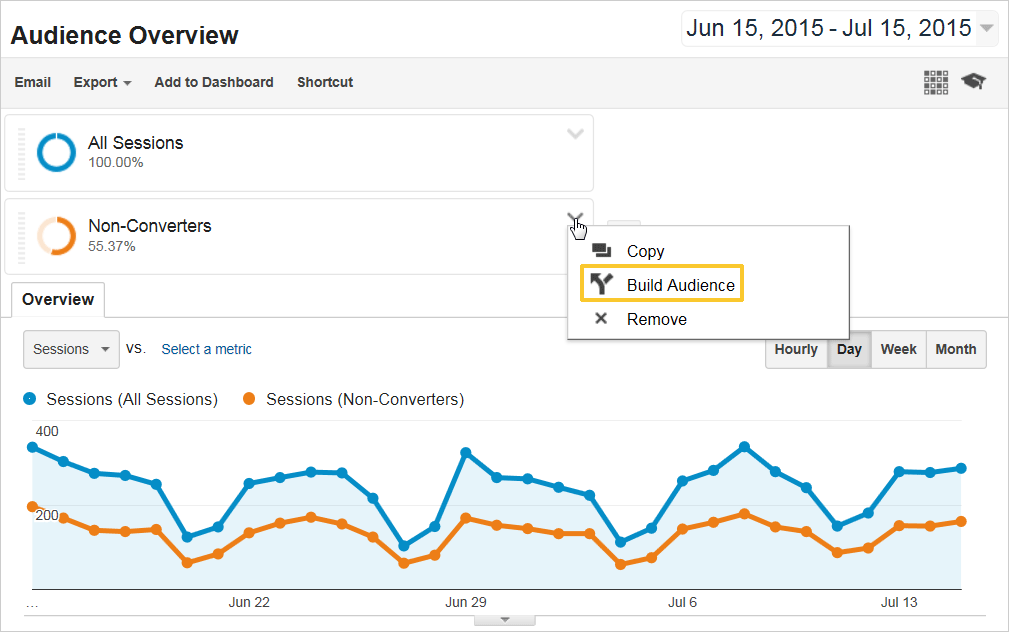The Benefits of Using Remarketing In Google Analytics
The Benefits of Using Remarketing In Google Analytics
Blog Article
Taking Advantage Of Remarketing in Google Analytics: A Comprehensive Overview
Using remarketing in Google Analytics supplies organizations a critical side in reaching out to potential customers. This guide will lose light on the necessary actions involved in harnessing the complete capacity of remarketing in Google Analytics, leading to boosted advertising and marketing outcomes.
Understanding Remarketing in Google Analytics
Remarketing in Google Analytics allows businesses to strategically target customers who have formerly engaged with their site or mobile app. By leveraging information from Google Analytics, organizations can develop customized remarketing lists based on user habits, such as pages checked out, activities taken, or particular goals accomplished. This powerful device makes it possible for organizations to re-engage with individuals who have actually shown passion in their services or products, eventually boosting the possibility of conversion.
Recognizing the different types of remarketing techniques is essential for an effective project - What Is “Remarketing” In Google Analytics?. Google Analytics uses numerous options, including basic remarketing, dynamic remarketing, and remarketing listings for search advertisements (RLSA) Each kind serves an one-of-a-kind objective and can be tailored to fulfill details advertising goals
Furthermore, assessing the efficiency of remarketing campaigns is vital for optimizing outcomes. Google Analytics provides valuable insights into the efficiency of various remarketing approaches, enabling services to make data-driven decisions and fine-tune their targeting technique. By continually keeping track of and changing remarketing efforts based upon analytics data, businesses can optimize ROI and drive success in their advertising and marketing campaigns.
Establishing Remarketing Campaigns

After establishing audience checklists, the next step is to link Google Analytics with Google Advertisements. By connecting these two platforms, services can effortlessly move audience lists from Google Analytics to Google Advertisements for remarketing functions. This integration enables more specific targeting and far better campaign efficiency.
As soon as the accounts are linked, companies can create remarketing projects in Google Advertisements using the target market details previously specified in Google Analytics. These campaigns can be tailored with details ad creatives, messaging, and bidding process methods to properly re-engage with previous visitors and drive conversions. By adhering to these actions, services can leverage the power of remarketing to improve their marketing efforts and raise ROI.
Making Use Of Audience Division Strategies

Predefined sections in Google Analytics permit you to quickly evaluate typical audience categories like brand-new users, returning users, or users who finished a details goal on your internet site. Custom-made sections, on the various other hand, allow you to produce one-of-a-kind sections based on details requirements that are necessary to your organization objectives. Dynamic remarketing listings immediately readjust based upon customer habits, revealing personalized ads to users who have communicated with your website specifically methods.
Studying Remarketing Performance Metrics
Upon assessing the efficiency of remarketing campaigns in Google Analytics, the analysis of crucial efficiency metrics gives beneficial understandings right into audience engagement and conversion rates. By diving right into metrics such as click-through rates (CTR), conversion prices, cost per purchase why not try these out (CPA), and return on ad invest (ROAS), marketing experts can determine the success of their remarketing initiatives. Analyzing these metrics allows online marketers to maximize campaigns, fine-tune target market targeting, and assign budget plans effectively to improve total remarketing performance.
Maximizing Remarketing Techniques
When refining remarketing methods in Google Analytics, concentrating on target market division is critical for attaining project success. By splitting your target market right into specific sections based on their habits, demographics, or passions, you can tailor your ads better to every team. This targeted strategy increases the probability of involving users who have already shown interest in your solutions or items, causing higher conversion prices.
One more vital facet of enhancing remarketing methods is constantly testing and refining your campaigns (What Is “Remarketing” In Google Analytics?). A/B testing different ad creatives, messaging, or deals can help you recognize what resonates finest with your target market and drives one of the most conversions. By assessing the performance of these tests in Google Analytics, you can make data-driven choices to maximize your remarketing efforts even more
Additionally, leveraging dynamic remarketing can substantially enhance your project results. This function permits you to show customized advertisements to customers based on their past communications with your website, showcasing product and services they have actually previously seen. By delivering customized content to users based on their actions and interests, dynamic remarketing can aid increase interaction and drive conversions.
Final Thought
Finally, harnessing remarketing in Google Analytics helpful resources is a calculated approach to target customers that have formerly involved with a site. By producing personalized target market lists and utilizing target market segmentation strategies, services can enhance remarketing campaigns for raised conversion prices. Examining performance metrics and try this website continually maximizing techniques are essential for making best use of the performance of remarketing efforts.
Google Analytics provides various choices, including standard remarketing, vibrant remarketing, and remarketing listings for search advertisements (RLSA)After establishing up audience listings, the following step is to link Google Analytics with Google Ads. By connecting these two systems, organizations can flawlessly move target market listings from Google Analytics to Google Ads for remarketing functions.As soon as the accounts are connected, organizations can produce remarketing campaigns in Google Advertisements making use of the target market details previously specified in Google Analytics.When refining remarketing methods in Google Analytics, focusing on target market segmentation is extremely important for attaining campaign success.
Report this page